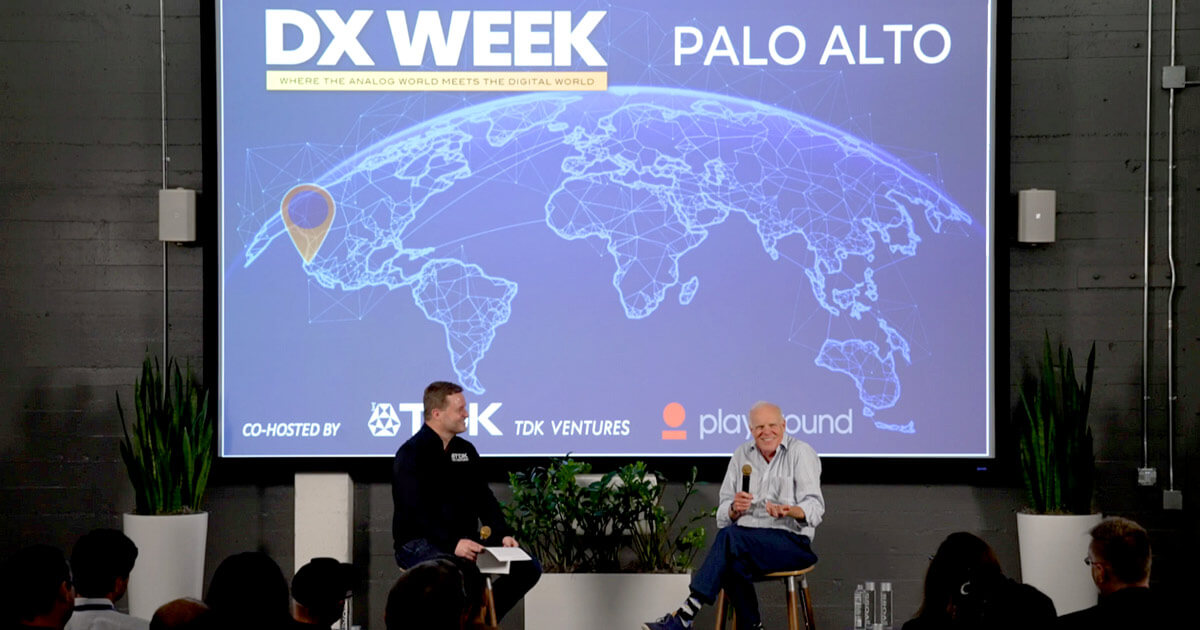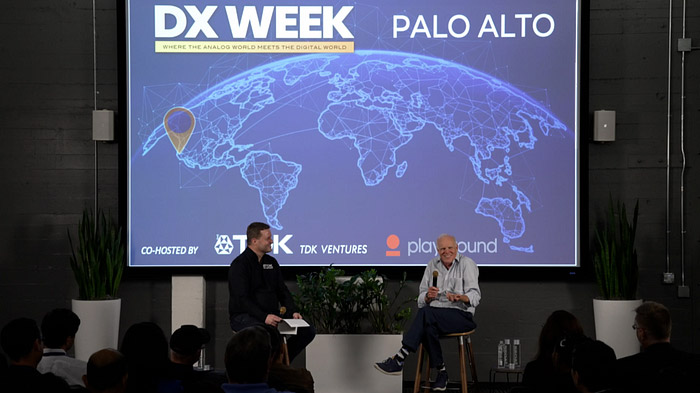Introduction
So Says Alphabet Chair and ex-Stanford President John Hennessy
University communities must come down from their ivory towers and become “much more engaged in finding solutions to the really big problems,” according to John L. Hennessy, Chairman of Alphabet, Inc. Perhaps no one is more qualified to pontificate on the best ways to solve the world’s problems than Hennessy, whose resume includes a tenure as president of Stanford University, co-founder of MIPS Computer Systems, and co-recipient of the 2017 Turing Award for developing the RISC architecture used in most of the world’s microchips.
“If universities don’t engage, where are those answers going to come from?” asked Hennessy, whom entrepreneur and investor Marc Andreessen has anointed “the godfather of Silicon Valley.”
His wide-ranging fireside chat with TDK Ventures President Nicolas Sauvage marked a fitting kickoff to Digital Transformation Week 2023. The event was the second annual seminar held by TDK Ventures on the ways entrepreneurs, researchers, and investors are coming together to solve the world’s environmental threats, social injustices, and productivity, communications, and mobility challenges.
Hennessy said breakthroughs in an earlier era came from Xerox, Bell Labs, IBM, and others that no longer exist. Government is an important implementer, but it’s not the source of most innovation.
Research universities can contribute to solving other challenges as well, As a grandfather, Hennessy said climate issues have risen to the top of his list of areas he would like to see higher education take a leadership position, along with “figuring out how to improve the quality of life for the people who live in the…southern sector of our planet.”
Sauvage reinforced this point, noting that because we only have one planet, we only do good in the world when everyone benefits. Equitable sustainability must include the global south.
Hennessy said that when he took over as Stanford president in 2000, the university made an effort to build up its commitment to working on environmental issues.
“Climate change was already a problem, but so was the sustainability of the rainforests and other global issues,” he noted. “We began a university-wide effort around environmental control, sustainable development, and energy issues. Energy is so front and center. If we can’t solve the climate-change problem, the planet is in deep doo-doo anyway. Despite the fact that we had roughly doubled the number of faculty and researchers working in the area, we probably needed to double it again to get up to the scale we’re going to need.”
He quoted Bill Gates’ take on the two groups whose views on climate change are patently false: those who think it isn’t happening and those who think it’s going to be easy to solve. “It’s possibly the hardest problem we have faced after dealing with the threat of nuclear weapons. It’s on that scale.”
So, under Hennessy’s leadership, Stanford created an entire school dedicated to climate challenges. It was too massive he said “to just have a loose-knit configuration that would bring together various schools.”
With the help of John Doerr, a longtime Stanford supporter and investor in a number of Stanford spinouts, the Stanford/Doerr School of Sustainability was established to “protect our natural environment and to generate new solutions that produce sustainable, affordable, and secure energy for all,” its website proclaims.
Sauvage asked, for the entrepreneurs watching, why sustainability is so hard, and how technology can make it easier.
Hennessy said technology development will provide a cornerstone for solving these big problems, but its evolution will not come quickly enough to provide the answers alone. He cited the progress made in electric-vehicle batteries. While praising Elon Musk and Tesla for advancing technology and quickly driving costs down, he observed that energy density increases only incrementally each year.
“If I had a silver wand, I’d wave it and we’d have a bulk low-cost energy storage capability,” he said. “If I had that technology, I could dramatically accelerate renewable energy because I would have a place to store it at night, instead of juicing up EVs on fossil fuel-generated electricity when the sun isn’t shining.”
Like many, he harbors high hopes for fusion, but “that technology is 20 years away, and it always has been. But if somebody makes the fusion breakthrough….There are some big investments in some interesting new approaches that could lay the groundwork.”
Sauvage noted that TDK Ventures has invested in Type One Energy, which is working to crack the fusion code, so he hopes the technology is closer to 10 years away than 20, drawing laughter from the audience. “We look at the timeline as when it is no longer a science risk, but an engineering risk.”
“Together with those technology innovations, we’re going to have to have policy change,” Hennessy contends. “My silver wand over policy change is a carbon tax. And it’s not such a horrible thing. I think within five years, we can get CO2 sequestration down to where the added cost to a gallon of gas might be $1.”
While Hennessy said he wouldn’t base a political campaign on that platform, he says it would be a small price to pay to become carbon neutral. After all, consumers adjusted when gas prices rose more than a dollar a gallon last year, he said.
“Technology with policy is what’s going to get us to the solution before we destroy the planet.”
In response to Sauvage’s assertion that unit economics will play a role in the development of technological solutions, Hennessy paraphrased Pulitzer Prize winner Thomas Friedman in noting that “you’ve got to find a technology that solves the problem for a price that China is willing to pay.”
He said the world must stop burning coal, which is four times worse for the environment than natural gas. But while the United States has made significant progress in minimizing coal consumption, China remains the largest coal-burning economy in the world.
Sauvage pointed out, however, that the question of equity arises when contemplating a carbon tax. With the global south lagging in sustainability, a flat tax would be unduly onerous on these poorer regions. Hennessy voiced support for a program advocated by George Shultz, who served in Richard Nixon’s and Ronald Reagan’s cabinets. That plan would impose the carbon tax, but give a per-capita rebate. Low carbon-generating, non-industrialized nations would make money while much of the West, China, and Japan would pay.
Sauvage turned the discussion to the future of computing. We will chronicle Hennessy’s comments in part two of our coverage of the opening session of TDK Ventures’ Digital Transformation Week 2023.
The second annual TDK Ventures DX Week brought together some of the world’s brightest talent in the digital space. Held over three days in three global technology hubs — Silicon Valley, Tokyo, and Bengaluru — the panels, interviews, and lectures centered on the nexus between the analog and digital environments. The most prestigious thought-leadership event of the year, DX Week highlighted the insights, best practices, and visions that will guide digital technologies toward creating a more productive, inclusive, and sustainable planet.



